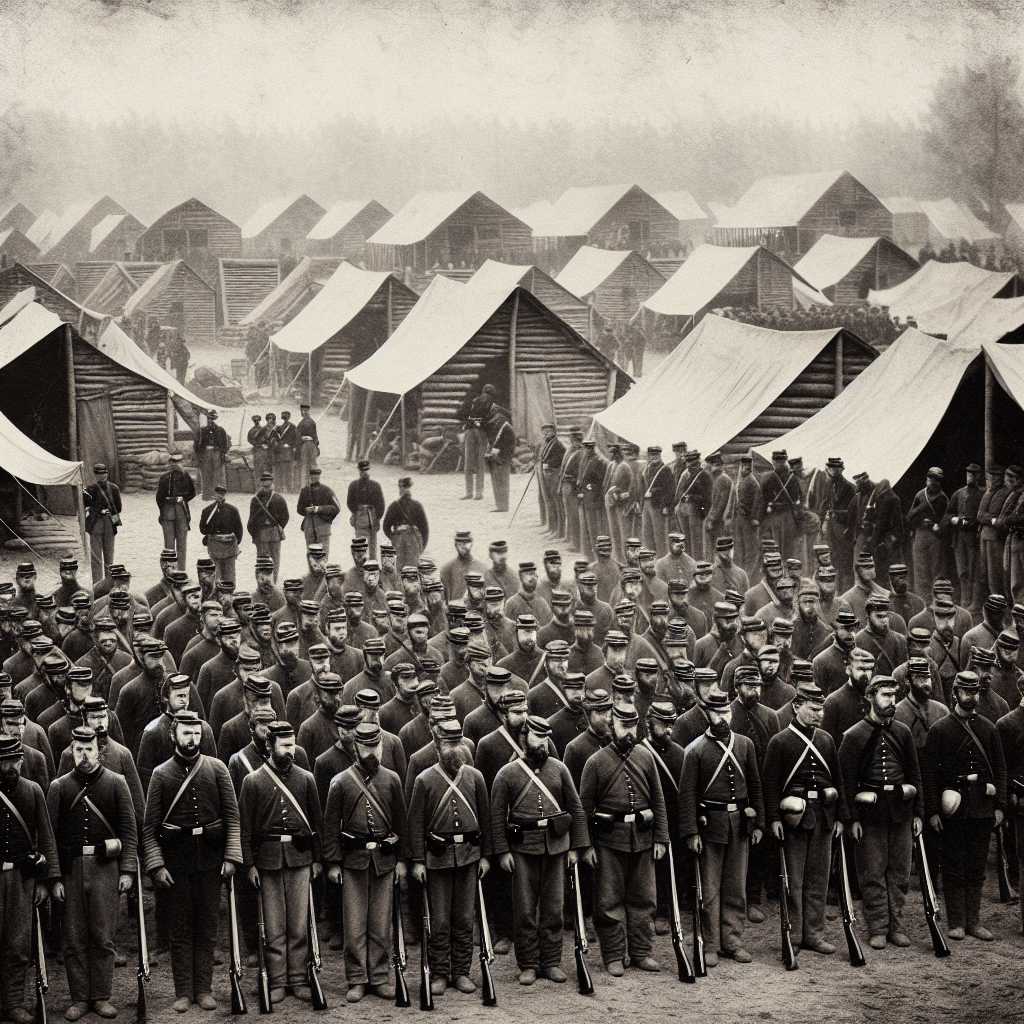##### The American Civil War: A Comprehensive Overview #####
Introduction: Exploring the Pivotal Conflict of the United States
The American Civil War, lasting from 1861 to 1865, remains one of the most significant events in United States history. It was a conflict that pitted brother against brother and nearly tore the nascent nation apart. Its repercussions are still felt today, as the war not only decided the fate of slavery but also set the stage for America’s emergence as a global power in the centuries that followed. This article will delve into the backgrounds, battles, figures, and consequences of this monumental conflict in U.S. history.
Prelude to War: The Nation Divided
The roots of the Civil War can be traced back to deep socio-economic and political differences between the northern states (the Union) and the southern states (the Confederacy). The North had quickly industrialized, embracing manufacturing and infrastructure development, while the agrarian South remained heavily reliant on plantation farming and slavery. These differences led to varied interests and visions for the country, resulting in increased political tensions. Critical issues included state rights, economic disparities, expansion policies, but most notably, the moral quandary and legality of slavery.
Outbreak of Hostilities: The Spark at Fort Sumter
On April 12th, 1861, tensions turned to confrontation when Confederate forces opened fire on Fort Sumter in South Carolina. After a 34-hour bombardment, Union forces surrendered the fort, marking the official start of armed conflict. President Abraham Lincoln called for volunteers to suppress the rebellion, leading several more states to secede from the Union and join the Confederacy.
Major Battles: Turning Points of the War
Across four years, many battles defined the ebb and flow of war efforts on either side; few were as pivotal as Antietam, Gettysburg, and Sherman’s March to the Sea.
The Battle of Antietam:
Regarded as one of the bloodiest single-day battles in American history, Antietam on September 17th, 1862 saw tremendous casualties. This tactical draw but strategic Union victory gave Lincoln the confidence to issue his preliminary Emancipation Proclamation.
The Battle of Gettysburg:
Fought from July 1st-3rd, 1863, Gettysburg was another crucial turning point. The Union victory marked a significant defeat for Confederate General Robert E. Lee’s northern invasion and signaled a shift in the war’s momentum.
Sherman’s March:
General William Tecumseh Sherman’s Atlanta Campaign and subsequent march to Savannah ravaged Georgia’s infrastructure and cut off crucial supply lines for the Confederacy. His approach of total war aimed to break Southern spirit by bringing war to its civilian doorstep.
Notable Figures: Leaders Who Shaped the War
The Civil War saw individuals rise who became immortalized for their leadership and bravery.
Abraham Lincoln:
Serving as President during America’s darkest hours, Lincoln persevered in his commitment to preserve the Union. His eloquence and determination fostered unity within Northern ranks and eventually succeeded in reshaping the war into one over emancipation.
Jefferson Davis:
As President of the Confederate States, Davis faced daunting tasks. With inferior resources and no international recognition for his government, holding firm against greater numbers proved insurmountable despite early military victories under his administration.
Ulysses S. Grant:
Grant rose through Union ranks to become General-in-Chief due to his aggressive strategies and successes in places like Vicksburg. His partnership with Lincoln would be instrumental in securing an eventual Union victory.
Robert E. Lee:
Lee became synonymous with Confederate efforts during the Civil War. Despite an opportunity to lead Union forces, he chose his home state of Virginia over his country and won many astonishing victories against plentiful odds.
Aftermath: Reconstruction and Legacy
Following Confederate General Lee’s surrender to Union General Grant at Appomattox Court House on April 9th, 1865, attention shifted toward rebuilding a divided nation—what we now know as Reconstruction. This era aimed at reintegrating Southern states into the Union, ensuring rights for freed slaves, and rebuilding America’s Southern regions.
The legacy of the Civil War continues to inform American politics, race relations, social debates, and much more – indicating its unending impact on U.S. society.
Complex Legal Changes:
The war brought about substantial legal shifts evidenced through constitutional amendments abolishing slavery (the 13th), granting citizenship irrespective of race (the 14th), and protecting voting rights regardless of race or previous condition of servitude (the 15th).
Cultural Consequences:
A shared history of immense tragedy led to cultural markers like memorials and battlefields preserved as hallowed grounds alongside literature articulating diverse experiences from both sides.
Economic Repercussions:
The destruction wrought upon Southern infrastructure necessitated vast investments while paving ways for augmented federal powers over states—a redefinition catalyzed by wartime exigencies involved in restoring national unity.
